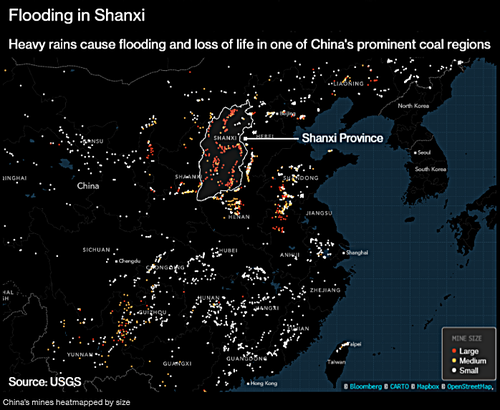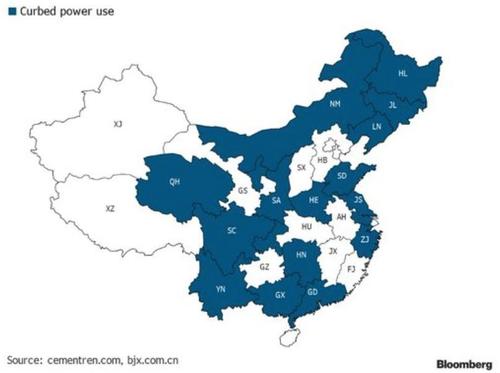China Coal Futures Hit Record High As Mines Flood; Worsening Power Shortages Hit Rust Belt
China’s top coal-producing region has been devastated by torrential rains and flooding this past week. About 9% of the coal mines in Shanxi province, an area responsible for producing 30% of China’s supply, have closed operations. The direct effect of this has been a spike in coal futures.
Heavy rainfall flooded Shanxi over the weekend. More than 120,000 people have been evacuated, and 60 of the 682 coal mines in the province have been closed. Industrial yards and manufacturing complexes have also been shuttered due to flooding.
The province is usually a dry area but record-breaking rain last week complicated things for the mining industry. This also comes at a time when Beijing has called on mining companies to boost output amid a nationwide power crunch.

As a result, Coal futures on the Zhengzhou Commodity Exchange jumped 12% to $218.76 per ton, a new record high, on Monday.
A devastating and widespread power crunch has hit China in recent months, resulting in as many as 20 provinces or about 66% of the country’s GDP have announced some form of power cuts. Due to the growing energy crisis, Goldman Sachs told clients last month that the energy crisis will severely impact the country’s economic growth.

For the fourth quarter, Citic Securities analysts told clients, China faces a gap of 30 million to 40 million tons of coal. This translates into reducing industrial power use by 10% to 15% in November and December. UBS Group AG said this would result in a 30% slowdown in activity in energy-intensive industries like steel, chemicals, and cement-making.
Beijing has also approved electricity prices to increase by 20% against the benchmark, compared with a current cap of 10%, allowing more power plants to economically produce power considering high costs for fossil fuels, such as coal, natural gas, and crude.
…click on the above link to read the rest of the article…
